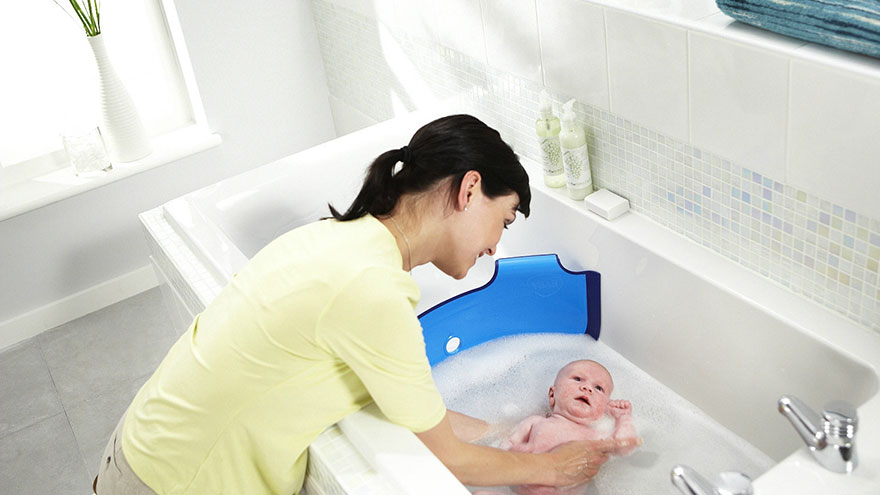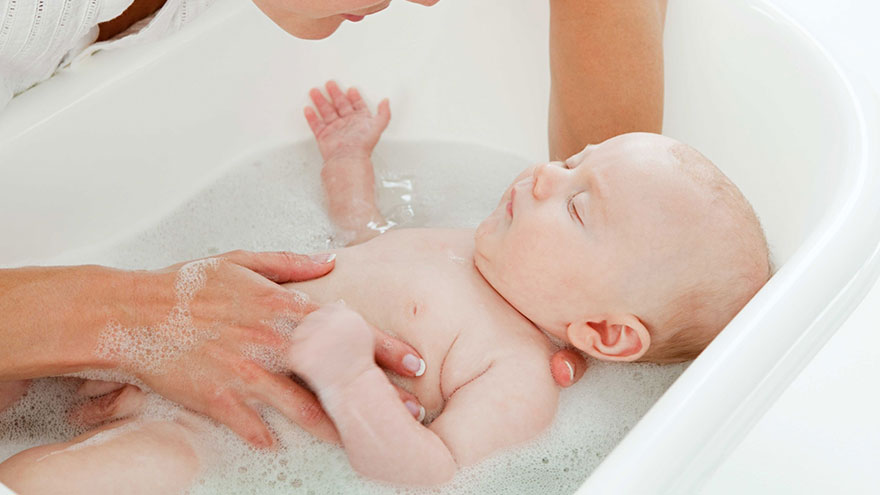How to Clean a Newborn Baby
Sweet, soft and precious to behold, newborn infants won’t need a daily bath for several months. A little one’s sensitive skin needs washing no more than twice a week to stay supple and clean.
With a little patience and preparation, parents can make baby’s bath time an easy ritual that is fun for everyone involved.
How to Prepare
A newborn baby’s bath should be given in a warm room so that the little one doesn’t get chilly while undressed. Before a bath, assemble everything needed. The Ask Dr. Sears website recommends a baby bath kit comprised of two wash cloths, a mild soap, baby shampoo, cotton balls and tip applicators, a hooded towel for drying the baby and fresh diapers and clothes.
For infant safety, the bathing area should be free from any potential distractions, such as cellular phones. Never leave the baby unattended, not even for a few seconds.

Sponge Bathing
To prevent infection to the baby’s umbilical cord, she should only have sponge baths until the umbilical cord falls off, after about two weeks. Swaddle the baby in a towel before beginning the bath. Alternatively, she can wear her diaper. In the winter, spot-clean the baby and keep her wrapped for warmth. Place the baby on a padded, flat surface or on your lap.
Using a warm washcloth and plain, lukewarm water, wash the baby’s exposed face. Add a few drops of soap for oily accumulations behind her ears, arms and neck. Save the baby’s diaper area — particularly the genital area for baby girls — for last, according to the American Academy of Pediatrics’ Healthy Children website.

Use a moistened cotton ball to clean a baby girl’s genital area, and always ensure to wipe it from front to back. A baby boy’s circumcision area should be kept as clean as possible by washing it with warm water. Treat the incision with a dab of petroleum jelly to keep it from sticking to the diaper or any bandages, if necessary.
Wash the baby’s bottom by turning her onto her tummy or lifting her legs as she lies on her back. Clean the base of the umbilical cord with a cotton swab moistened with rubbing alcohol.
RELATED : How to Hold a Newborn Baby
Tub Bathing
Once a baby’s umbilical cord has fallen off, he can be given a tub bath. A tub or basin filled with just 2 inches of lukewarm water will suffice for a baby’s first bath. Once the baby is undressed, immediately place him into the water, which should never warmer than 120 degrees Fahrenheit.
The Healthy Children website recommends placing a baby in the water feet-first, and then gradually lowering him into the tub. Most of the baby’s body will remain above the water, so pour water over him frequently to keep him warm.

Use a soft washcloth to clean the baby’s body. A cotton swab works well to remove any oily residue that collects between the delicate folds of baby’s legs, buttocks or beneath his arms. You can use a mild shampoo, but no more than twice a week.
Wrap him in a hooded towel when bath time is over, to prevent him from losing too much body heat.
Soothing During Bathing
Some newborn babies may find bathing stressful. Parents can soothe an unhappy bather by using a reassuring tone and gently massaging the baby’s body. If a baby is particularly upset, expedite the bath routine or forgo the tub in favor of sponge baths a while longer.
The Ask Dr. Sears website indicates that some parents choose to sit in a full-sized tub with the baby, or follow a stressful bath time with a soothing activity such as massage, nursing or a familiar lullaby.

You Might Also Like : Can Newborn Babies Drink Water?
Check out the video version of this article on YouTube

